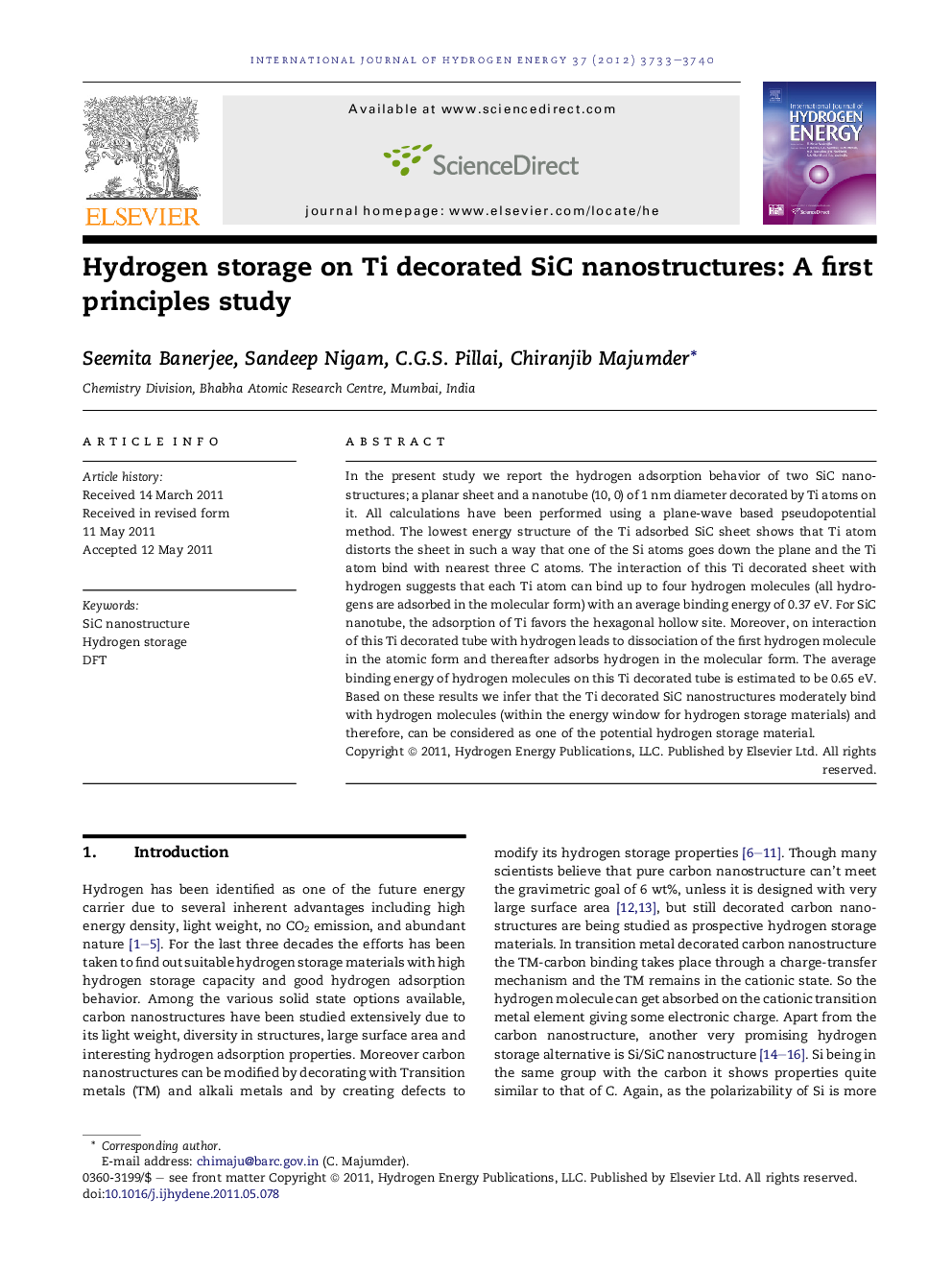| Article ID | Journal | Published Year | Pages | File Type |
|---|---|---|---|---|
| 1282388 | International Journal of Hydrogen Energy | 2012 | 8 Pages |
In the present study we report the hydrogen adsorption behavior of two SiC nanostructures; a planar sheet and a nanotube (10, 0) of 1 nm diameter decorated by Ti atoms on it. All calculations have been performed using a plane-wave based pseudopotential method. The lowest energy structure of the Ti adsorbed SiC sheet shows that Ti atom distorts the sheet in such a way that one of the Si atoms goes down the plane and the Ti atom bind with nearest three C atoms. The interaction of this Ti decorated sheet with hydrogen suggests that each Ti atom can bind up to four hydrogen molecules (all hydrogens are adsorbed in the molecular form) with an average binding energy of 0.37 eV. For SiC nanotube, the adsorption of Ti favors the hexagonal hollow site. Moreover, on interaction of this Ti decorated tube with hydrogen leads to dissociation of the first hydrogen molecule in the atomic form and thereafter adsorbs hydrogen in the molecular form. The average binding energy of hydrogen molecules on this Ti decorated tube is estimated to be 0.65 eV. Based on these results we infer that the Ti decorated SiC nanostructures moderately bind with hydrogen molecules (within the energy window for hydrogen storage materials) and therefore, can be considered as one of the potential hydrogen storage material.
► The stability and electronic structure of SiC sheet and nanotube were calculated. ► A large band gap was found between the valence and conduction band. ► The nanostructures are functionalized by Ti atom externally. ► Both nanostructures can bind with four hydrogen molecules. ► The binding energy is within the energy window of an ideal hydrogen storage material.
